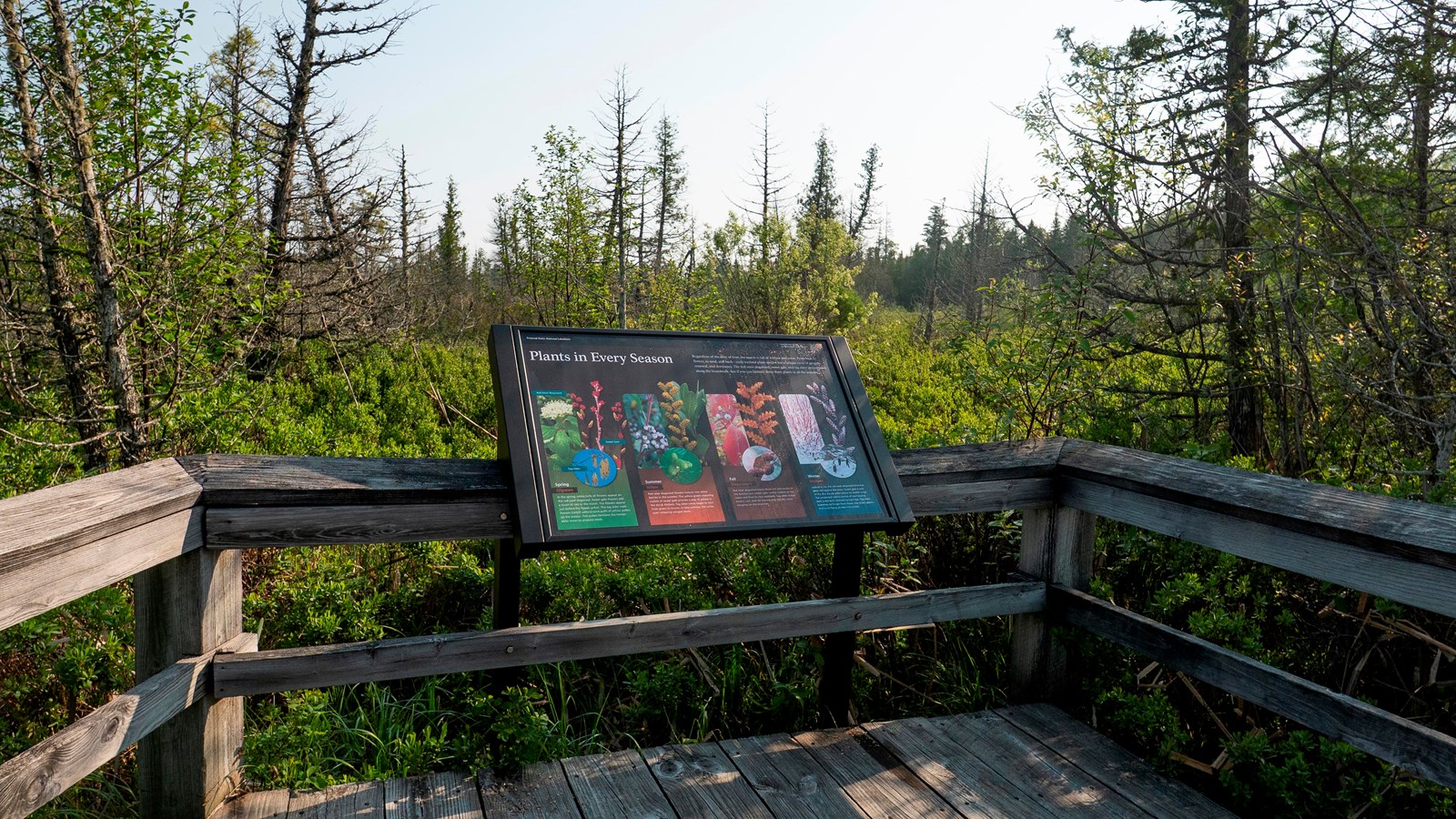Last updated: June 28, 2025
Place
Plants in Every Season Exhibit

Plants in Every Season
Regardless of the time of year, the marsh is full of texture and color. From bud, to flower, to seed, and back—each wetland plant species has a unique cycle of growth, renewal, and dormancy. The red osier dogwood, sweet gale, and tag alder are common along the boardwalk. See if you can identify these three plants in all the seasons.Spring
The Ojibwe word for Spring is “Ziigwan.”
In the spring, white tufts of flowers appear on the red osier dogwood. Sweet gale flowers add a touch of red to the marsh. The flowers appear just before the leaves unfurl. The tag alder male flowers (called catkins) send puffs of yellow pollen on the breeze. This pollen fertilizes the female alder cones to produce seeds.
Summer
The Ojibwe word for Summer is “Niibin.”
Red osier dogwood flowers mature into white berries in the summer. The yellow-green maturing nutlets of sweet gale provide a pop of yellow in the shrub thickets. Tag alder cones begin to turn from green to brown. In late summer, the cones open releasing winged seeds.
Fall
The Ojibwe word for Fall is “Dagwaagin.”
Red osier dogwood leaves blush red and purple in the autumn sun. Sweet gale nutlets tumble to the water and float to new seedbeds. Tag alder leaves brown, curl, and fall leaving only the dry cones dangling on the branches.
Winter
The Ojibwe word for Winter is “Biboon.”
Locked in ice, the red osier dogwood branches glow red against the snow. Sweet gale is one of the few shrubs with catkins on winter twigs. The unopened catkins consist of overlapping dark scales with contrasting light tips. Tag alder branches no longer have leaves, but dried catkins and cones hang on late into winter.
